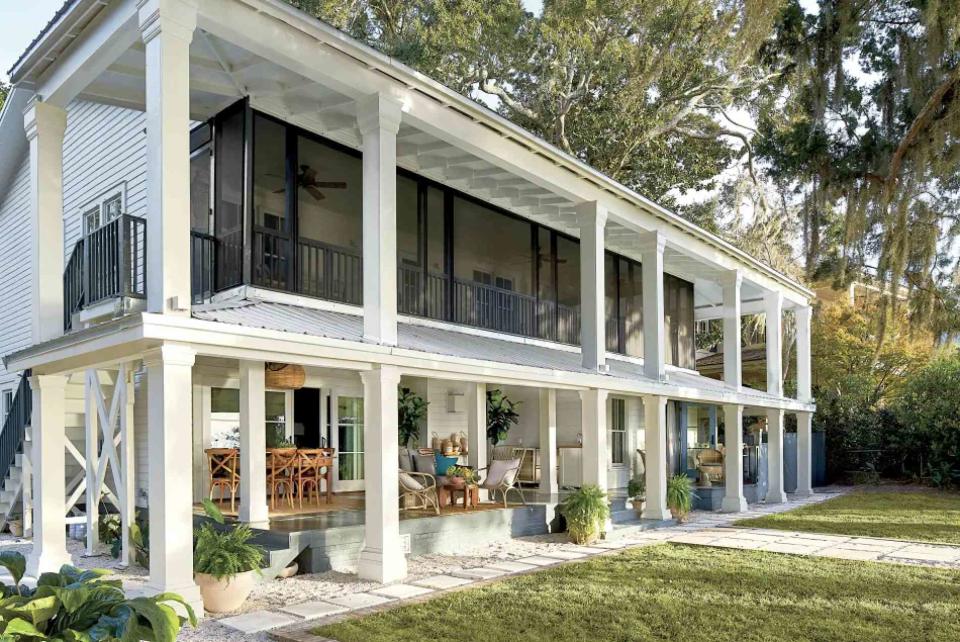The Rain Porch Is A Southern Architectural Innovation We Love
Listen to the rain without getting wet? Yes please.

Laurey W. Glenn; Styling: Buffy Hargett Miller
Southerners can rattle off types of porches like Forrest Gump’s Bubba Blue lists off methods of cooking shrimp: We’ve got front porches and wrap-arounds; sleeping porches and screened ones; some with columns, and others with rails. We’re also big fans of the rain porch, the genesis of which we can proudly claim. And while you may be tempted to say that any porch can be a rain porch when it’s drizzling, there are some architectural characteristics that make this one especially suited for shrugging off a downpour.
Related: 75 Porch And Patio Design Ideas You'll Love All Season
What Is A Rain Porch?
Unlike a traditional porch, rain porches’ supporting posts are positioned a few feet in front of the porch itself, allowing the roofline to extend well past the seating area and offer more generous protection from the elements. “A proper rain porch roof slopes out 3 to 6 feet from the main roofline,” notes a story in the May 2018 issue of Southern Living.
“In the ever-present threat of a summer downpour, a rain porch, with its extended lower roof and posts placed out beyond the normal porch floor, helps to keep porch sitters and their iced tea from getting soaked.”
Bill Ingram, architect
Where Did Rain Porches Come From?
There are a couple of theories of the rain porch’s origins. Some claim that the form was devised in the coastal Carolinas, which is why they’re sometimes colloquially referred to as “Carolina porches.” Other architectural historians say they originated on the Eastern Shore of Alabama, along Mobile Bay. “Being an Alabama native I always think of a rain porch as an Alabama creation; sorry, South Carolina,” says architect Bill Ingram.
Do People Still Build Rain Porches?
While rain porches aren’t nearly as common as they once were, their architectural upsides are something we’d do well to remember, notes Ingram. “Today, we can learn from this same invention by not forgetting the benefits of having deep porch roof overhangs and also by raising the porch floor off the ground,” he says. “This not only provides air circulation below, but also reduces splashing when that summer shower arrives."
For more Southern Living news, make sure to sign up for our newsletter!
Read the original article on Southern Living.

